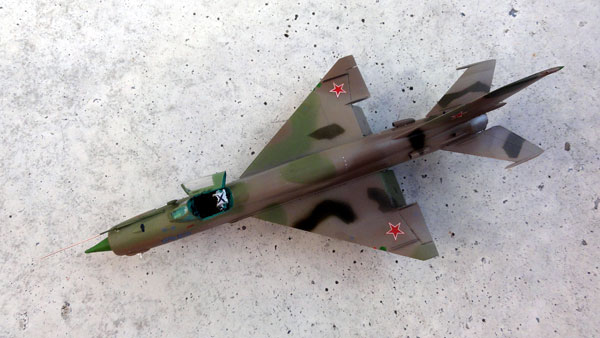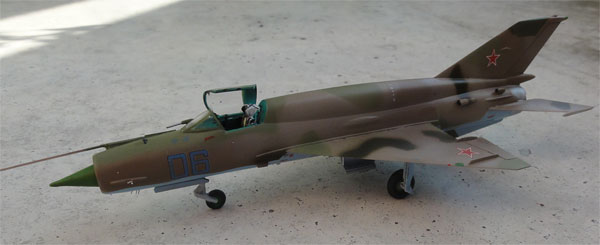[ Page 4 ]
1/72 scale kits of the Mikoyan Gurevich MiG-21
AKURA has issued what seems a copied Mastercraft kit. This kit was made in a similar fashion as seen on Page 3.
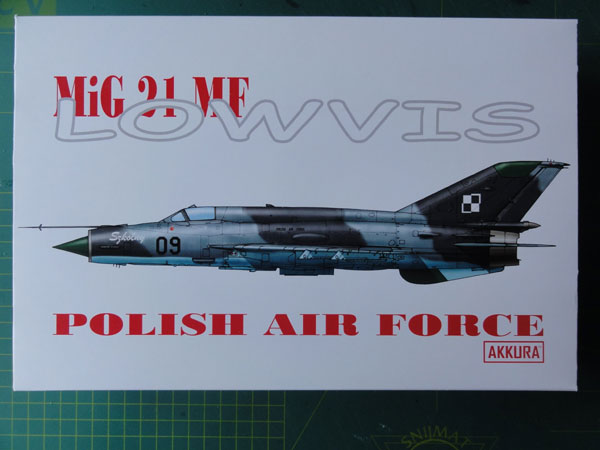 .
.
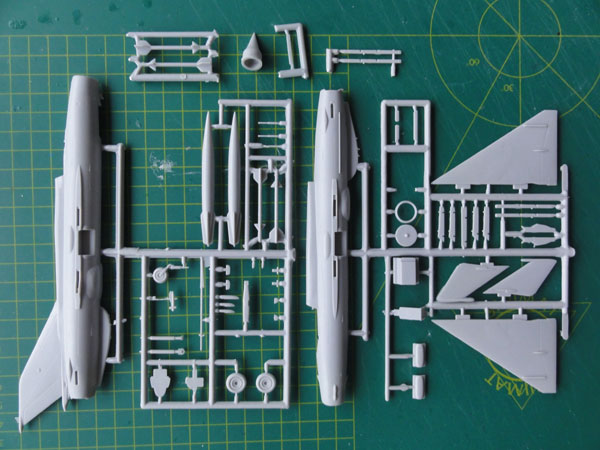
The decals look OK.
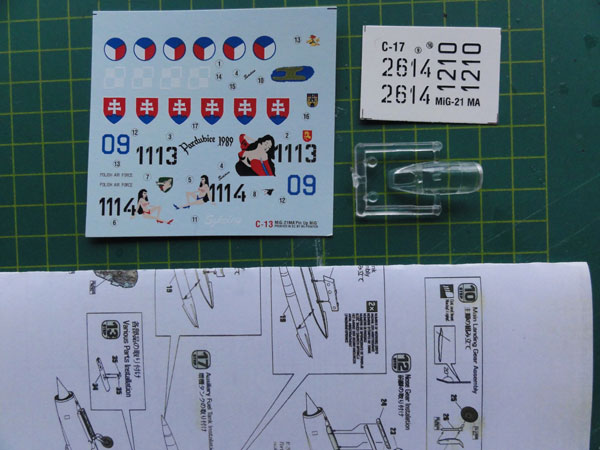
I opened up the nose gear wheel bay a bit. Otherwise, it was simply assembled.
It was finished
in a scheme of the NIGERIA air force with a camouflage pattern was
used with these acrylic (water based) colours airbrushed:
Sand / beige:
Revell Aqua 314
Olive green:
Revell Aqua 361
Light blue
(lower surfaces): AKAN 73008 acrylic
The lower fuel
tank was airbrushed aluminium and the cockpit interior the "soviet emerald
green" using AKAN 73005 acrylic.
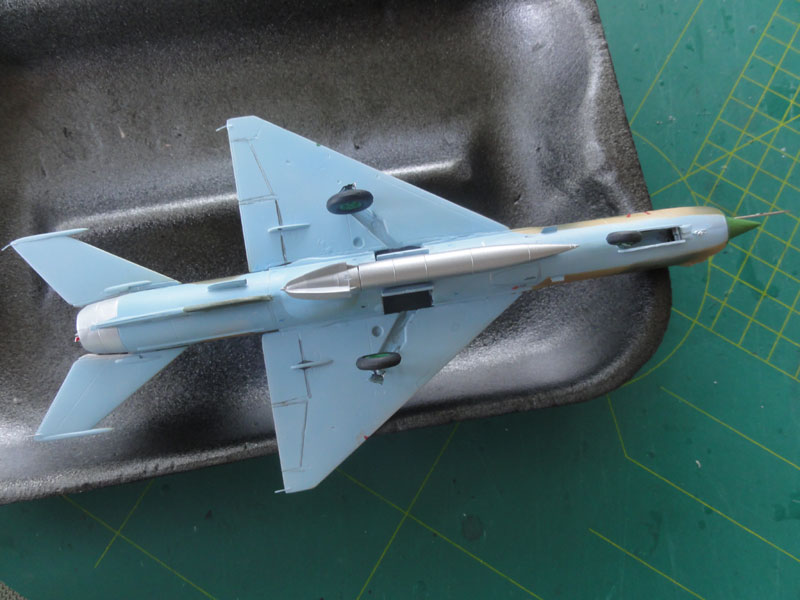
There is no real depth in the jet
pipe, a pipe was made using thick aluminium foil wrapped up in a tube.
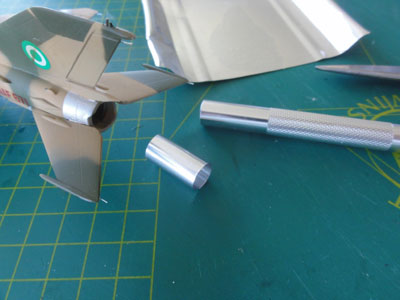
The large pitot
tube made of a metal needle and smaller sensors set in place. Finally,
I added static dischargers from thin fishing line.
Decals came
from Berna set 72-76 for the Nigerian scheme. The book "Soviet and
Russian Military aircraft in Africa" shows it on page 204.

I
decided also to add some intake covers from thin plastic card.
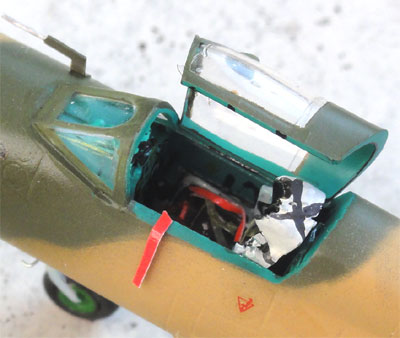
Nigeria is a large country with a large population that became independent from Britain and formed a Federation in 1960. In
1961 Nigeria started to set up an air force (NAF) and in 1964 it
was formally established. Assistance was obtained from West Germany,
Canada and India for training. Some Federal aircraft in the first years were 2 MiG-15UTI and 8 MiG-17
jets. In
the mid 1960s a civil
war started in the eastern region of Biafra. Support was obtained from
the Soviet Union with some MiG-17 and Czech L-29 armed trainer
aircraft. From Egypt and Algeria some IL-28 bombers were obtained.
In Biafra the rebels had a few Saab MFI-9B Minicons deployed.
The conflict ended in 1970.
Later on, the NAF participated in various UN missions, like
in Congo and Tanganyika /Tanzania. In the 1970s additional L-29 Delfins were acquired and Piaggio P149
aircraft as well as some C-130 transports from the USA. Also Fokker F27 transports were acquired.
From 1975 some
25 MiG-21 MF and 6 MiG-21UM aircraft were delivered and in the 1980s,
two dozens of L-39 Albatros trainers were bought as well as Aermacchi
MB-339, so the trainer fleet is quite divers. From Europe, in 1984
some 18 Sepecat Jaguars attack aircraft (13 SN and 5 BN) were purchased
in addition to some 24 Alpha jets
"E". But the Jaguars were flown only
until 1991 and also other aircraft were in poor serviceability
condition. Some 24 Aero L-39ZA armed jet trainers were acquired from
1986. Other types are the Dornier Do-28 and Do-228 as well as
ATR42. From 2009 from China some 15 Shenyang/ Chengdu F-7 fighters
(modernized with ELBIT systems) were purchased replacing the old MiG-21
fleet. In 2011 a modernisation program started on the 13 remaining
Alpha jets and it seems that 2 additional Alpha jets came from a source
in the USA. They are also used in the conflict with Boko Haram. In Nigeria there are
a dozen air bases a fleet of helicopters operated including
attack Mi-24 "Hinds". March 2021 the first of Pakistani JF-17 Thunder fighter aircraft arrived at Makurdi.
There are severe conflicts in Nigeria with several groups such as islamic Boko Haram as well as corruption. 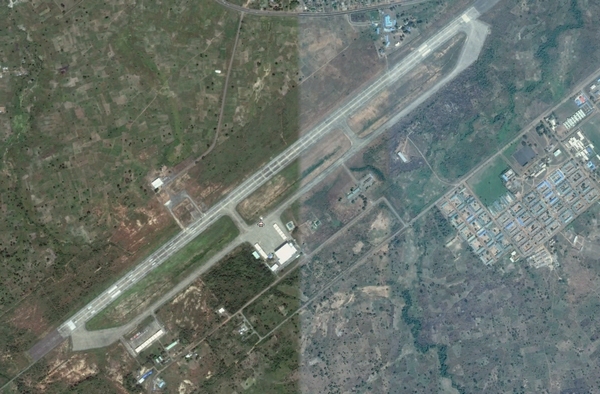 Makurdi airport
Makurdi airport
MiG-21 aircraft were deployed from the Makurdi base and in a decade half the aircraft were lost due to
accidents. Due to lack of spares most MiG-21's were
out of service in the mid nineties. Later, Chinese F-7 , the MiG-21 "copy"
, aircraft were purchased with final delivery in 2010.
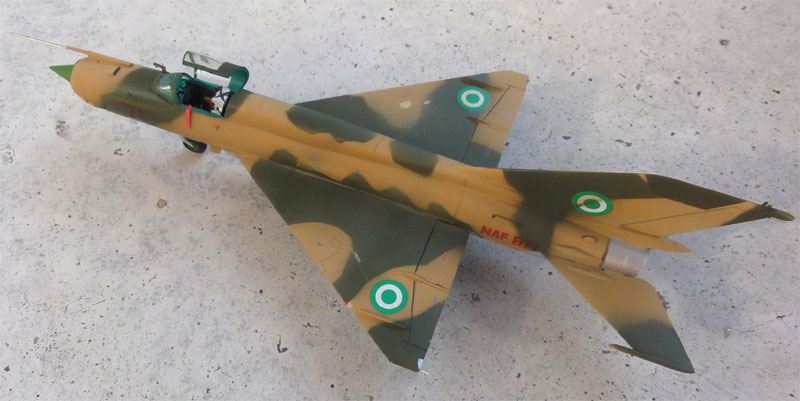
.MiG-21MF
Nigerian Air Force "NAF 671" , probably used by 81st Air Marit until 1978 ?
page 2
page 3
page 4
page 5
page 6
page 7
Condor has also issued kits in 1/72 scale of the MiG-21. Probably they were originally from "Eastern Express" dated from the year 2003.
I had 2 kits for the SMT kit #7214. And a single kit #72005 ? for the MiG-21R which has an additional sprue for the lower reconnaissance "Type R" looking pod to be carried below the fuselage and it has also the wing tip SPO-3 antenna pods in this sprue.
Otherwise the parts are similar with
about 50 parts in these very basic kits. But there are a few panel lines
and these are finely engraved.
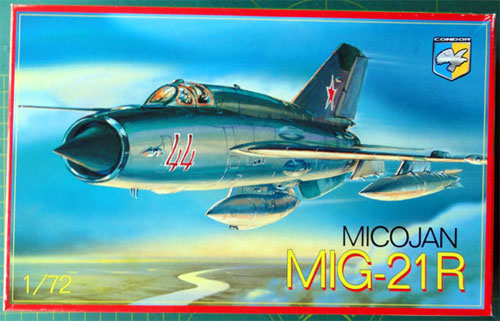 .
. 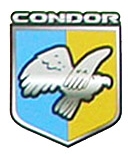
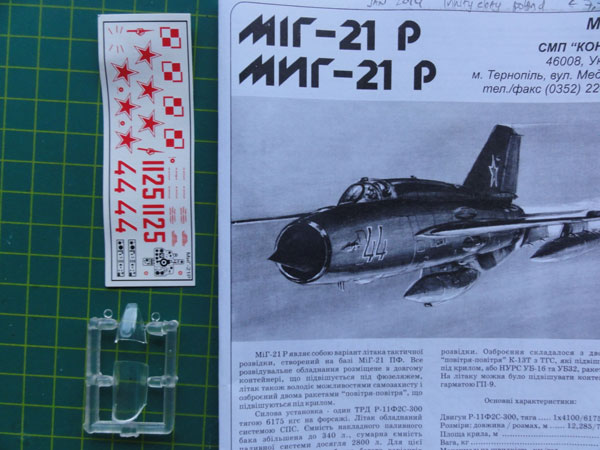 .
.
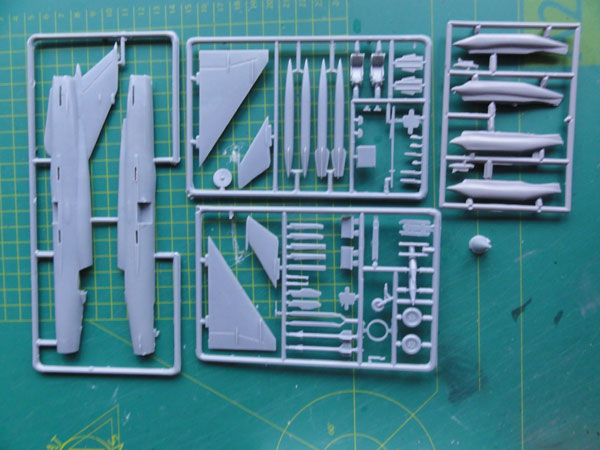
On the right the extra sprue with
the recon pod is seen and wing tip pods. Decals in the R kit are for a
Soviet or Polish aircraft.
This is the very similar SMT box with
no. 7214 which probably originates from the year 2008 from "Eastern Express":
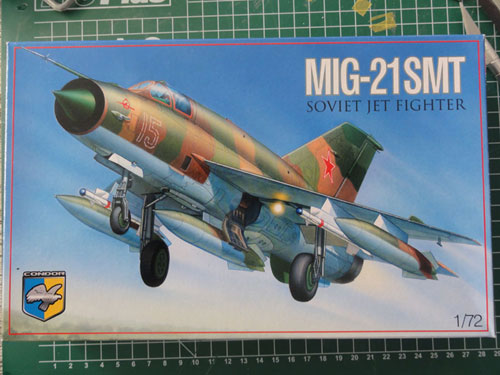
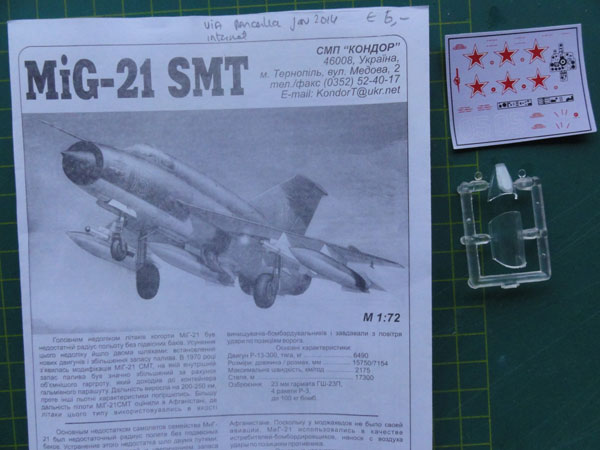 .
.
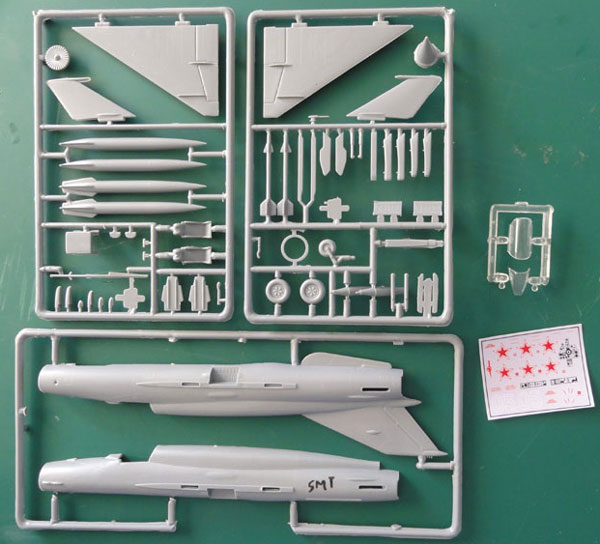
Only a single Soviet decal set is
provided in this SMT kit and it's quality looks not good.
![]()
OK, let us start modelling the three
Condor models........
In the Condor kits, the ejection seat is better replaced if you have. There is no real depth in the jet pipe, a pipe was made using thick aluminium foil wrapped up in a tube. I also opened up the nose gear wheel bay a bit.
I finished the MiG-21R as a Cuban
Air Force aircraft with photos found on internet. I airbrushed the following acrylic colours:
Green : Gunze Sangyo 303
Blue: a mix of Gunze Sangyo
H25 blue with a bit white mixed in.
Light grey: Gunze Sangyo H324
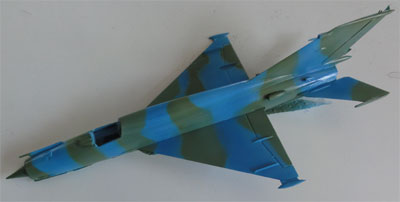
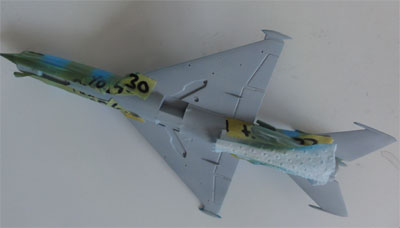
Cuban roundels were retrieved from
AZTEC
decal set 72049 and the nose code "125" found in the spare decal box.
The tail rudder fin flash was on Tally Ho set #956 for the MiG-19
and trimmed to fit.
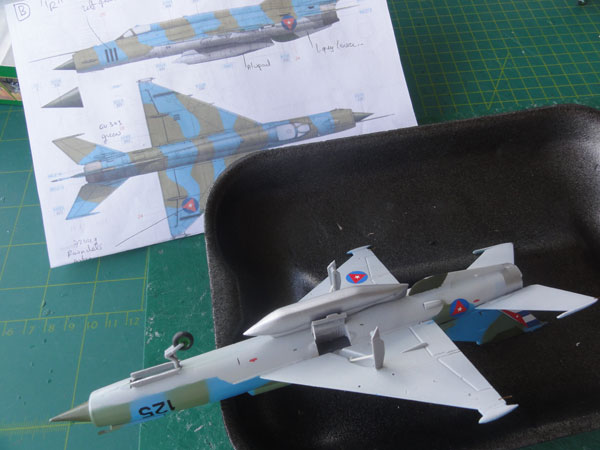
Note that the wing tip antenna pods
were also fitted. The model finish was made "as in well pristine" conditions
as they are well maintained in Cuba.
[area 110,800 sq.km | 12 million inhabitants | capital: Habana | GDP US$ 7,800 per capita nominal]
Being in
"America's back yard", the first military aircraft in Cuba were
Curtiss trainers in 1917 and some DH.4 bomber biplanes. A hurricane
destroyed many of these in 1926 and not earlier than the mid thirties
that a small Army aviation and navy aviation was established with WACO
and Stearman aircraft. After the war, in 1948 some P-51 Mustangs and
B-25 Mitchells were obtained. The first jets were T-33's from
1955 by the Fuerza Aerea Ejercito de Cuba.
Fidel Castro became active with guerillas in that period and March 1959 the existing Batista regime over thrown and a Socialist regime established and support from the Soviets announced. (The USA still had and has their Guantanamo Bay base). The Cuban "Defensa Anti-Aérea Y Fuerza Aérea Revolucionaria" got first some 20 MiG-15bis and 4 UTI trainers from the Soviet Union. (this was negotiated by Fidel's brother Raul). The delivery in crates in May 1961 was a month after the "bay of Pigs" invasion by the Americans. Assembly was done at San Antonio de los Banos. In the following years some 40 additional MiG-15's followed. Numerous incidents occurred with nearby USA and a few pilots also defected. Some of the old MiG-15 were operated until the 1990s!
The first of the MiG-17 were obtained in 1964 with additional deliveries in the end 1960s and 1970s. Some 75 MiG-17 were operated in the 1970s and some could fire R-3S ATOLL missiles. The type was withdrawn in the 1980s. In those years also some MiG-19 "Farmers" were acquired.
As early as 1961, in the Soviet Union training began of a MiG-21 F13 wing. Mid 1962 the aircraft were shipped in crates and arrived in Cuba end September 1962 in utmost secrecy. The first MiG-21 F13 flew on the island in the "Fuerza Aerea Revolucionaria" at the end of September 1962 at San Antonio. The Cuban missiles crisis started just a month later October 22, 1962 that nearly became a World Nuclear War. Later additional versions of MiG-21 were delivered including some PF and several dozens of MiG-21 PFM in 1966-1967 and included a batch of MiG-21 R. In the early 1970s at least 50 MiG-21 MF were delivered. Of these some 2 dozens went to Angola during in the Angola war and flown by Cuban pilots. From the early 1980s followed probably over 80 of MiG-21 "bis", four "R" and some UM trainers. These hundreds of MiG-21 formed the back bone of the Cuban air force for many years based at San Antonio de los Banos air base, south east of La Habana capital but also at Frank Pais airport near Holguin.Only much later from 1978 over 80 MiG-23 MF, MLA, ML and UB trainers aircraft were supplied. Also the strike MiG-23 BN "Flogger H" was obtained with some 40 to 50 aircraft delivered from mid 1978.
From 1980 some MiG-21's were also supplied second hand to Peru and some seem still to be deployed at "marxist" Angola. Later on, from 1989 some 12 MiG-29 (subtype 9.12) and 2 UB (9.15) "Fulcrum" aircraft were delivered and based at San Antonio and also operated from San Juan. The Cuban air force now appears to have no more than about 2 dozen operational jet aircraft.
Other types are the usual Antonov transports like the early AN-2 and later AN-26 and IL-14 (often also in civilian Cubana livery). VIP transports are IL-62 and IL-96 airliners.
Several Mil helicopters are also flown by the Army and the Navy.
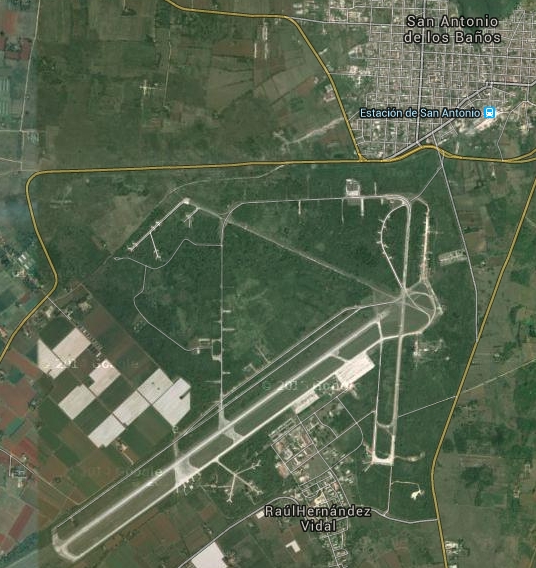
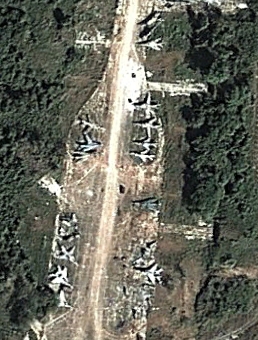
Los Banos with seen at right with what looks like MiG-21, MiG-27 and MiG-29 aircraft
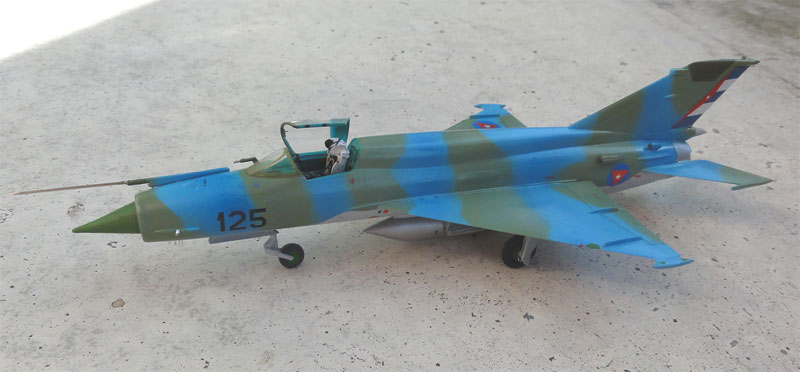
MiG-21R
of the Cuban Air Force or "Defensa Anti-Area y Fuerza aerea Revolucionaria"
, coded "125"
 .
.
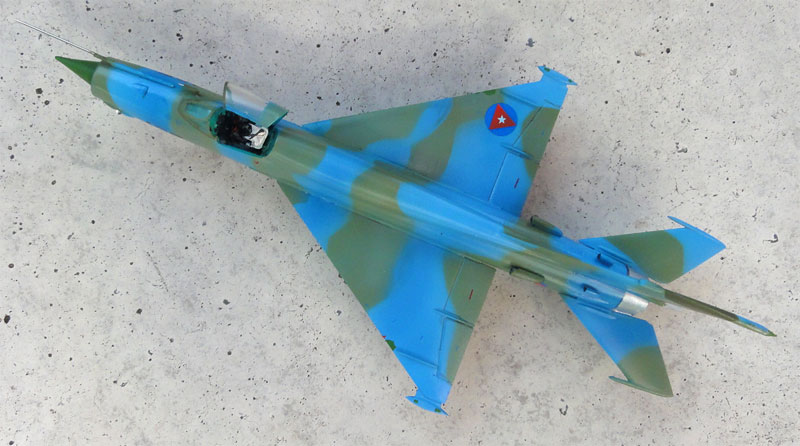
The other two very similar Condor kits of the MiG-21 SMT was finished in a similar fashion. Both were to get a Soviet Air Force scheme, but with different camouflage patterns. I drooped the inboard flaps down: first saw loose the flaps and than reposition these.
MiG-21 SMT (scheme 1) was airbrushed
with the colours:
dark green: AKAN 73024
medium green: Gunze Sangyo
303 (approx Fed.Std 34102)
sand: AKAN 73080
sand/brown: Revell Aqua 314
lower light blue: AKAN 73008
The green die-electric panels got
a Revell Aqua 361 green colour.


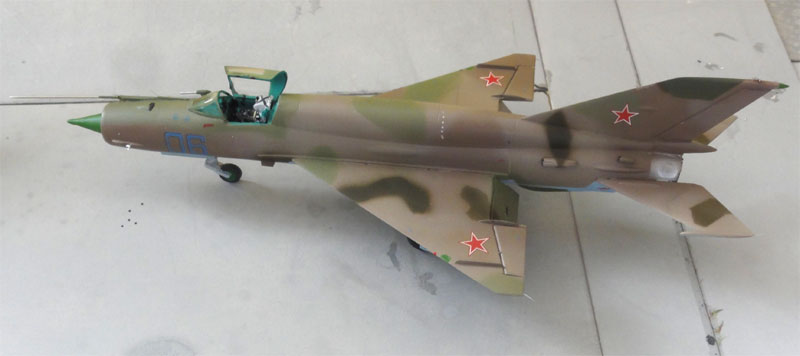
MiG-21 SMT
Soviet Air Force "Blue 08"
The bulky dorsal spine is well seen
as compared to other MiG-21 versions.
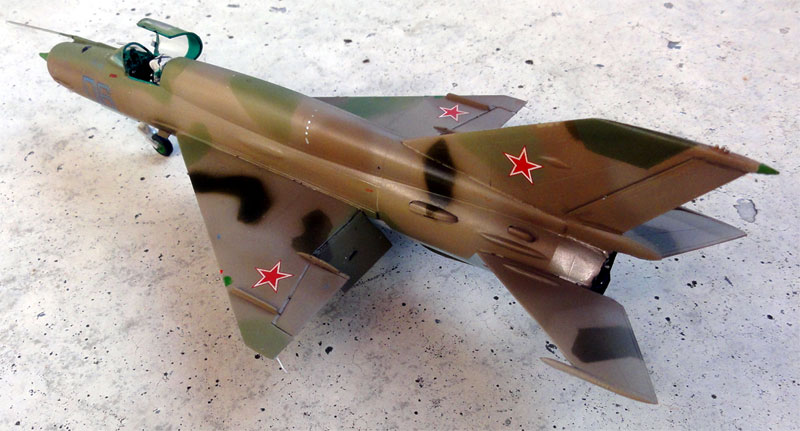
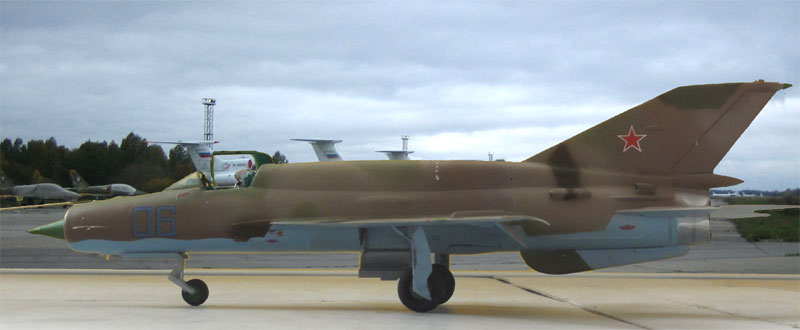
![]()
The second Soviet Air Force MiG-21SMT
CONDOR kit got these colours:
dark green: AKAN 73024
medium green: Gunze Sangyo
303 (approx Fed.Std 34102)
light brown: I was not sure about
this colour needed, so omitted it.
dark brown: AKAN 73026
lower light blue: AKAN 73008
Decalling in progress on both SMT
kits...
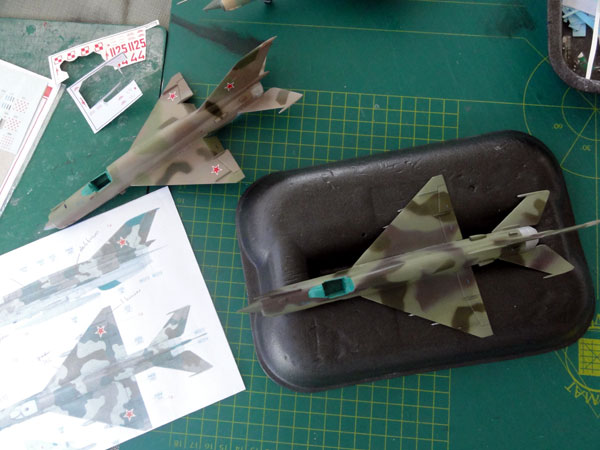
These models were finished as normal
with a final semi-dull coat.
The second SMT model:

MiG-21 SMT
Soviet Air Force "Yellow 03"
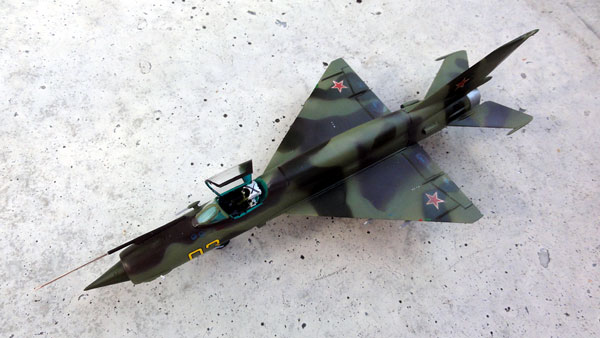 .
.
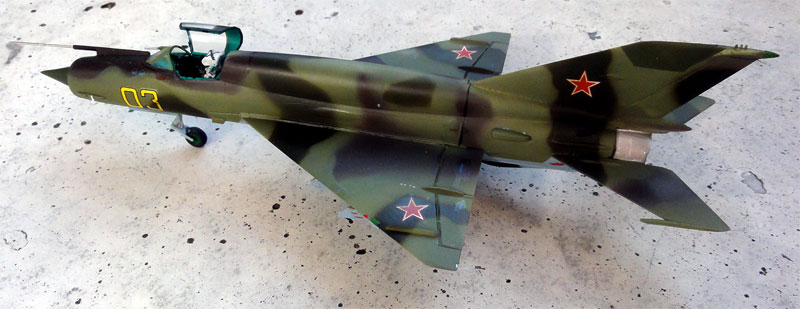
A side note: here it is seen what different "lighting" outside conditions do with the colour appearance. Something that happens on real aircraft as well! So it is not always very simple to establish for weird aircraft in foreign countries what colours used actually are!
On to next [ Page 5... ]Back to MiG-21 page 1....
Back to 1/72 Models.......
(c) Copyright Meindert "designer"/ All rights reserved. Your comments are welcomed by webmaster
Created this page
January 19, 2016;
update May 2021
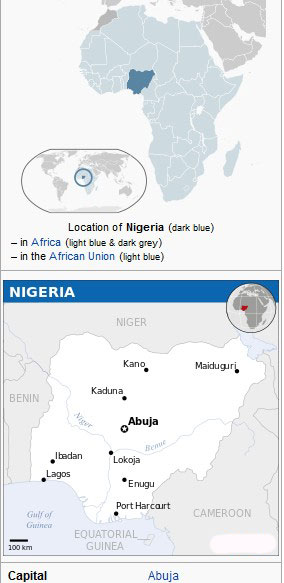
 ........
........ 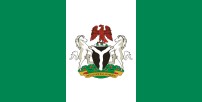 .
. 
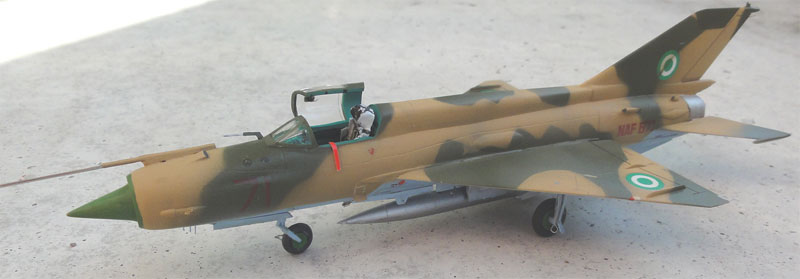
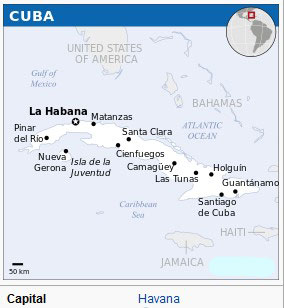
 ,..
,..
